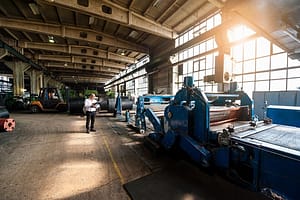The Health and Safety (First-Aid) Regulations Act of 1981 has been amended multiple times to remain relevant, and knowing the laws as they stand in 2020 is important for employers in the UK to whom they apply if companies are to stay compliant. Let’s now take a look through the highlighted points of the Act, and how much extra first aid courses add to an employer’s overall employee training expenses.
Duty of adequate supply procurement
Every employer is legally obligated to procure and provide its employees with adequate first-aid equipment. Adequate being the keyword here, the supplies and equipment for first-aid provided to the employees should be appropriate in both kind and quantity, for attending to the types of injuries and/or illnesses that they are likely to sustain/contract while working on a specific project.
Duty of adequate first-aid training
According to The Health and Safety (First-Aid) Regulations Act, an employer must ensure that a sufficient number of suitably trained employees are present at a job site, in order to provide necessary first-aid to all workers if they suffer or contract anticipated or possible injuries or illnesses. They should be proficiently trained to effectively handle and utilise the first aid equipment and supplies mentioned in the previous point.
In case the person in charge of administering first-aid to injured/sick employees has not completed the necessary first-aid courses, they cannot hold that position legally. Therefore, the additional cost first aid courses add to a company’s training expenses is a cost that all businesses must budget for. You can find the costs of first aid courses here on the official website of Skills Training Group.
Due to social distancing, employees have the opportunity to get their CPR and first aid certification online as well.
They provide any and all types of necessary first aid training to employees, and if you are not sure about the kind of first aid training that your workers need exactly, the website is an excellent resource to learn more about that too.
Duty of adequate replacements, when necessary
In case the employees trained in appropriate first aid courses cannot attend work or remain absent from the job site for some reason or the other, the employer must arrange for replacements before commencing with work at the site. A few important clauses in the Act about temporary or long-term replacements can be highlighted as follows.
- Arranging for adequate replacements will be necessary to stay compliant with The Health and Safety (First-Aid) Regulations Act, even if the absence of the trained employees is only temporary in nature
- The said replacements or temps must also have a similar or higher level of first-aid training if they are to fill up the positions
- Criterions for maintaining a sufficient number of first aid trained employees at the job site must also be fulfilled, even in the absence of regular employees who usually attend to the same
Duty of providing an appropriate first aid room
Any and all first aid rooms provided to the employees must have the following features.
- It should be wheelchair and stretcher accessible
- It should have all the necessary equipment and supplies, as is deemed essential for treating possible injuries/illnesses suffered at the worksite
Duty of needs assessment
In order to provide the right kind of first aid equipment, supplies, and appropriate training to their workforce, employers must know what the dangers are exactly. This is why the duty of needs assessment is an essential and logical part of The Health and Safety (First-Aid) Regulations Act. Highlights of the section could be underlined, as stated below.
- Assessment of the first aid needs of a worksite must be made separately for each different or new worksite/project
- The assessment should include both the possibilities of general and job-specific potential for health hazards, injuries, and illnesses
- It should take into account both the nature of the job, as well as the nature of the employees tasked with completing the job
- The history of accidents in the segment in general, in addition to specific incidents in the concerned company’s past records must be assessed
- The report cannot be prepared without considering the workforce distribution stats and their work patterns
- Special consideration should be given to the location; remote locations require more medical supplies, equipment, and adequately trained employees
Duty of ensuring competence
As previously mentioned, the need for first aid trained workers must be met in terms of both training and number. However, the employer is also responsible for making sure that the newly hired or trained employees have a valid certification for first aid training completed. The two most common types of accepted certifications in the UK are as follows.
- FAW or First Aid at Work certifications
- EFAW or Emergency First Aid at Work certifications
An employer can deem hiring of a first aider unnecessary
It is within the right of an employer to not have trained first aiders present at the worksite if they come to the decision that such staff are unnecessary for the project/job in question. Even if the employer is willing to take that risk, they must still arrange for the following.
- General first aid supplies
- Suitably trained employee/employees to maintain and manage the first aid supplies and equipment
- The appointed caretaker of the first aid supplies and equipment will also be tasked with calling emergency services, if and when it is necessary
It should be noted companies that forego the need for adequate first aider recruitment and training in order to save money can be subject to lawsuits, huge fines, and even permanent shutdowns if an accident does happen in the absence of a qualified first aider.
To prevent this from happening, it is best to have the first aid needs of your business assessed by professionals. Also, documentation is highly advised, even though it’s not mandated by the law. In case of an accident, the ensuing investigation will go in your favour if you can produce the documents that back up your decision to arrange for the first aid supplies, equipment, and personnel in the way that you did for that project.






Leave a Comment